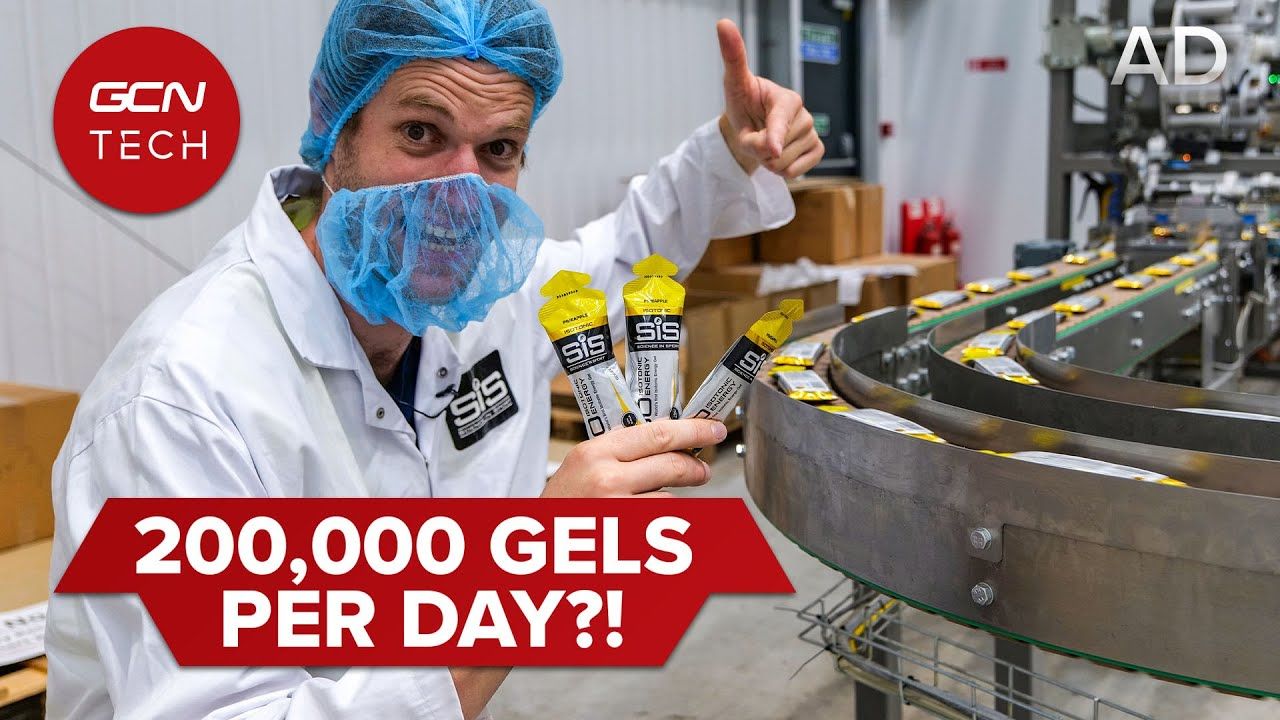
Every cyclist wants to avoid the dreaded bonk – that moment when energy levels reach zero and your legs turn to jelly. Doing this requires careful fuelling, which can be difficult on long rides when carrying food becomes a dilemma in itself.
That’s where dedicated energy products come into the equation, and Science in Sport (SiS) is one of the biggest brands in the business. The British company has been creating nutritional products since 1992 and it now supports 320 athletes worldwide, including Ineos Grenadiers.
Its products have been used at the biggest races in the world, supporting Tour de France winners and World Champions, but they’re also used by amateur cyclists across the globe too.
That got us thinking, how are SiS products created and what is its winning formula? We sent Conor Dunne to the company’s factory to find out. While there he caught up with Rob Mellor, new product development manager, who provided more insights into how SiS creates its products.
Watch the full factory tour in the video above, or check out the interview below.
Conor: How do you create a recipe for a gel?
Rob: One way is that we take learnings from top-level sport. We look at the ingredients the guys are using with regards to dosing, such as protein, carbohydrates, those kinds of things. And then that is taken down into the lab and we look at different formats such as gels, powders, drinks and also bars, and we think about the best way to deliver those ingredients into the systems of riders.
After that we make some bench samples in a lab. We test things out. We send them out to taste panels and get feedback. We make sure we’re creating the best product we can.
SiS has a range of gels. What are the main differences between its isotonic and Beta Fuel gels?
With the isotonic gel it’s a single-source carbohydrate, so it’s just a standard maltodextrin with water and the stuff I mentioned before.
With regards to the Beta Fuel gel, this was created for a more endurance type situation. So, it’s a dual-source carbohydrate. Within that you’ve got maltodextrin, plus fructose in there, and this obviously allows you to take in more of that fuel.
How much time and effort went into developing the Beta Fuel recipe?
The Beta Fuel is a weird one as it really came down from the top level. It was created with Ineos Grenadiers in 2018. It was originally a powder and we used the learnings we got from that; the man himself, Sir Dave Brailsford, said that the Giro d’Italia was all about fuelling. We looked at the science and we took learnings from that and then we created the range. And we said, what is the best format to put this in?
Then we re-evaluated it and did a relaunch, we did the gels. So we’ve got a new tropical gel, the standard Beta Fuel gel and we also did a chew.
How did you decide on a ratio for the recipe of the Beta Fuel gels?
That again comes from the performance solution guys. This is the idea of how science and literature has moved on.
Originally when we created the Beta Fuel back in the day and it was a powder, it was a two to one ratio between glucose and fructose. That moved on and the science changed. We worked out that, with a 1 to 0.8 ratio of glucose to fructose, not only could you load more carbohydrate, you’d also get a boost in performance compared to the two to one ratio.
At the same time you’d also get GI [gastrointestinal] stress from that. You’ve mentioned that you’ve taken stuff before and you’ve had gut distress and things like that. At this ratio, our in-house studies showed that actually, depending on what Beta Fuel product you use, whether it was a chew, a gel or the powder, there was a complete reduction in this [gut distress].
Do you still work with teams to develop products?
Yes, that’s a massive part of our development. It’s what we call in-house performance solutions.
We go out and get partnerships with many professional teams. Ineos Grenadiers has been a big one for us, it’s been one of our flagship partnerships.
Some of the development we do is predominantly just for elites. So it’s what we call the SiS Lab range. This is the stuff that might not be as financially viable and the average cyclist might not be interested in because it’s got a very high amount of carbohydrate or protein in there, and they’re never going to be putting themselves through those stresses [to require it].
Does that technology trickle down into other products?
Yes, of course. The main and best one being Beta Fuel. That started out as a complete elite concept, and then it trickles down. Then we did the commercial launch.
We knew we had the science, we knew it worked, and we have great people in a team who can go out there and explain how it can boost performance. For me it’s probably the best gel product on the market.
Keep up to date with the latest tech news and features on the GCN website, linked here.
